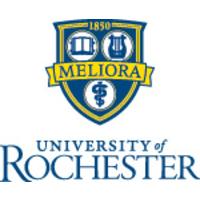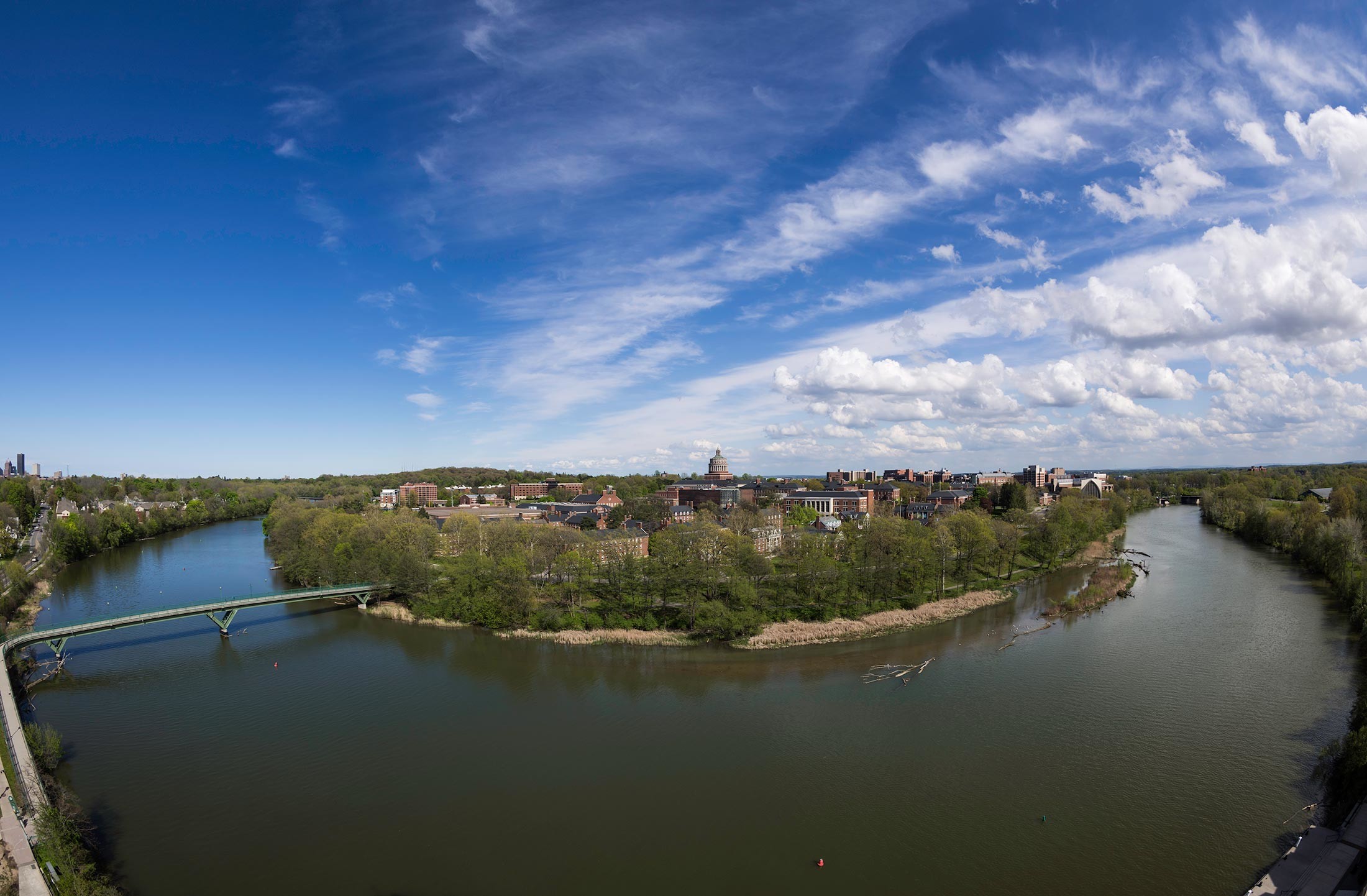
University of Rochester
Rochester , New York , United States
- Founded: 1850
- Establishment: University
- Type: Public
- Total Students: 12233
University of Rochester
The University of Rochester traces its origins to The First Baptist Church of Hamilton (New York), which was founded in 1796. The church established the Baptist Education Society of the State of New York, later renamed the Hamilton Literary and Theological Institution, in 1817. This institution gave birth to both Colgate University and The University of Rochester. Its function was to train clergy in the Baptist tradition. When it aspired to grant higher degrees, it created a collegiate division separate from the theological division.
The collegiate division was granted a charter by the State of New York in 1846, after which its name was changed to Madison University. John Wilder and the Baptist Education Society urged that the new university be moved to Rochester, New York. However, legal action prevented the move. In response, dissenting faculty, students, and trustees defected and departed for Rochester, where they sought a new charter for a new university.
Important Facts
Reasons to Go to a Research University
The University of Rochester is one of the top research universities in the United States, but what does it mean to be a research university? How is it different than any other university or college?
More majors/minors/concentrations to choose from
Because research universities tend to be on the larger side, there are a variety of faculty and students resulting in more majors and/or minors being offered. Not only are there more majors offered, but these majors are also very refined and specific with different concentrations within the major. This is great both for students who are not sure what they want to focus on and students who have a very particular interest.
Getting hands-on experience
Research universities tend to dedicate a lot of real estate to developing the best laboratory and facilities for their faculties projects and endeavors. However, these resources are not just for faculty and graduate students. Big laboratories mean a need for as many helping hands as possible. Undergraduates at research universities have the chance to work with faculty and graduate students on projects that also align with their academic interests.
Interested in graduate school, law school, or medical school? Get a head start!
As mentioned above, undergraduates can get research experiences very early in their academic career compared to students at non-research schools. This gives those who plan on applying to graduate school a competitive edge over their competitors who might not have research experience or their name listed as a contributor on a paper.
Like what you're learning? Want to know more? Take graduate courses!
At the University of Rochester, undergraduate students have the option of taking graduate courses as their advanced electives. This allows students to get a more in-depth look at a subject that they are passionate about and again decide if a graduate degree is for them.
Want to go international?
Research universities tend to have more name recognition internationally because they are frequently publishing papers or in journals that are viewed by universities across the globe. Faculty and students, both undergraduate and graduate, frequently participate in, present at, and attend conferences in their respective disciplines, which has allowed for the University of Rochester to become a well-known name among other distinguished institutions.
Ranking / Awards
The University of Rochester is ranked #29 in National Universities. Schools are ranked according to their performance across a set of widely accepted indicators of excellence.
- #29 in National Universities (tie)
- #10 in Best Colleges for Veterans (tie)
- #22 in Best Value Schools
Features
-
Ranking: 173

-
Ranking: 166

- Type of Accommodation: On Campus
Financials
Marketing Material
Contact Information
- 500 Joseph C. Wilson Blvd. Rochester, NY 14627
- To know more contact PSA toll free number 18002585772
Campus Information
River Campus
The River Campus is in a bend of the Genesee River about 2 miles (3 km) south of downtown Rochester and covers around 200 acres (81 ha). It is bounded by Bausch & Lomb Riverside Park, an 18-acre (7.3 ha) public park along the east bank of the Genesee River formerly known as the Olmstead River Walk, and Mount Hope Cemetery, where the grave sites of Susan B. Anthony and Frederick Douglass can be found. The River Campus was acquired in the late 1920s from the Oak Hill Country Club through a land swap deal orchestrated in part by Edwin Sage Hubbell and funded largely by George Eastman. After a period of landscaping, grading, and construction, the original buildings of the campus were dedicated in 1930 when the first class of River Campus were welcomed to the Men's college. The main academic buildings are examples of the Greek Revival style in 20th century collegiate architecture. The main buildings situated upon the Eastman Quadrangle are Rush Rhees Library at the head, flanked by Morey Hall, Bausch & Lomb Hall, Lattimore Hall, and Dewey Hall. The Rush Rhees Library, the unofficial symbol of the university, is also home to the Hopeman Memorial Carillon, the largest carillon in New York State, featuring 50 bells that chime on the quarter-hour. During the summer, the carillon features a recital series in which various artists perform on the instrument.Just off the quadrangle, in parallel, are Strong Auditorium and the Simon School of Business with the Interfaith Chapel opposite the Library. A Marc Mellon bronze of George Eastman was placed on the quadrangle in 2009.
Medical Campus
The University of Rochester Medical Center (URMC) is the primary campus for the university's medical education and research as well as the main patient care facility. The Medical Center is next to the River Campus and is dominated by Strong Memorial Hospital, the School of Medicine and Dentistry building and the Arthur Kornberg Medical Research Building. URMC also houses the School of Nursing and a variety of research centers, including the Wilmot Cancer Center, the Aab Institute of Biomedical Sciences, and the Clinical and Translational Sciences Institute.
The Eastman School of Music
The Eastman School of Music is situated on its own campus in downtown Rochester, which includes a residence for students, classroom and performance facilities, and the Eastman Theatre, a 2,326-seat concert hall which also serves as the primary venue of the Rochester Philharmonic Orchestra. The campus also features the Sibley Music Library, which is the largest academic music library in North America, as well as the largest privately owned collection of sheet music. Students are housed at 100 Gibbs Street, a dormitory building constructed in 1991.
South Campus
The South Campus is in Brighton, immediately south of Rochester proper. The campus includes the Laboratory for Laser Energetics, a Department of Energy-funded national lab, the Center for Optics Manufacturing, the Center for Optoelectronics and Imaging, and the now defunct Nuclear Structure Research Laboratory (NSRL). Graduate student housing is also provided at the Whipple Park complex.
Mount Hope Campus
The Mount Hope Campus consists of a number of old mansion homes including the Witmer Family House, which serves as the official residence of the President of the University, and the Patrick Barry House, which serves as the official residence of the Provost of the University.
Prince Street Campus and Memorial Art Gallery
An observatory owned and operated by the university is named in honor of the scientist C. E. Kenneth Mees, university professor and Eastman Kodak scientist.
Bristol Mountain Observatory
The university's first permanent campus was at the former farm of Azariah Boody.While a number of buildings still stand including Anderson Hall, the Eastman Laboratories, and a number of student dormitories, these buildings have been absorbed by private companies or the Rochester School of the Arts. The university retains control of a few acres of land including the land under the Sibley Library (razed), old campus gates, the Memorial Art Gallery old and new wings, and the Culter Union, a prime example of the Collegiate Gothic style of 20th century architecture.
Programs Offered
MS in Electrical Engineering
- Length 01 Year
- Total Tuition Fee 53520 USD
- Application Fee 50 USD
- Average processing time 30 days

